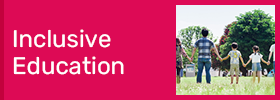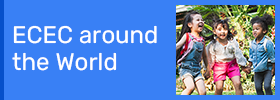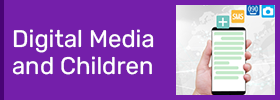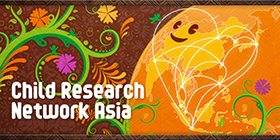Introduction
Many Japanese children living in Chennai, India, return temporarily to Japan with their mothers during the two-month summer holidays at international schools. Some attend local public primary schools in Japan in this period. During summer holidays in June and July, children can experience school life in Japan through the 'trial enrolment' system. While expat children in international schools abroad are exposed to many learning experiences that cannot be experienced in Japan, they cannot experience the group life unique to Japan, thus feeling a big gap and having difficulty adjusting when they return to school in Japan from abroad.
For example, commonplace scenes in Japanese schools, such as serving lunch in groups, eating the same menus and cleaning classrooms, may seem unfamiliar to children attending international schools. 'Why can't we choose what we want for school lunch' 'Why do children have to clean the classrooms and toilets? Where are the cleaning staff members?' Teachers at schools that host these students for short-term enrolment sometimes laugh bitterly at these questions. I think it is difficult to help children understand by simply saying, 'Because this is Japan'. The advantage of the 'trial enrolment' system is that, even if only for a short period of time, the students can come into contact with children and many teachers in the environment of a Japanese public school and experience first-hand the values and behaviour as a Japanese student.
Among classes using Japanese, reading aloud and reading and writing kanji in the Japanese language class are particularly valuable learning elements for children from overseas. In addition, through the study of Japanese history, geography and culture based on climate and customs in 'Life Studies' and 'Social Studies', they can learn about Japan and their local communities. I have lived in both India and Japan, where the culture and customs are very different. Whenever I see or hear of children who have grown strong through diverse experiences, even during just a two-month summer holiday spent in Japan, I strongly feel the significance of this system - cultural acceptance in group life.
In this issue, I report on the kind of education that children with various disabilities and difficulties are receiving in Indian schools, with a focus on 'inclusive education'.
1. School education in India - Differences between private and public schools
Firstly, when discussing education in India, there is one thing that I always keep in mind. As India is a 'republic' of states with various languages, religions and cultures, the educational administration system, learning content and the number of teachers assigned to each state in relation to the number of children differ greatly. In addition, there are large disparities between the poor and the rich, and it is difficult to speak of all schools, which are diverse according to religion, in the same way. To illustrate this point, I will use the example of Chennai, Tamil Nadu, where I currently live.
In India, many children from low-income families attend government schools. There are 281 government schools in Chennai. In India's urban centres such as Delhi, Mumbai, Kolkata, Bangalore, and Chennai, there are many international schools and local private schools -the so-called private schools that most children with parents who have regular jobs and a steady salary attend. There are 3,000 such schools in and around Chennai. Private schools vary in size, some are located in buildings, whereas others are large schools with facilities on spacious grounds. Annual tuition fees range from Rs.12,000 (approximately 23,000 Japanese yen) to Rs.4 million (approximately 7.5 million Japanese yen), and there are two types of school: local private schools (Tamil medium) and international schools (English medium). Many people may be surprised by the wide disparity in tuition fees; however, the economic disparity in India is not comparable to that in other countries, including Japan.
Most children enrolled in government schools come from low-income families and receive a free education. However, as there are few private schools in mountainous and fishing village areas outside the urban areas mentioned above, most children are enrolled in government schools, regardless of their families' economic situation. Currently, there is some controversy in Tamil Nadu regarding these government schools. The Governor of Tamil Nadu, R.N. Ravi, spoke quite harshly of the issue of the poor academic performance of children in government schools, citing examples such as 75% of children in grade 9 being unable to recognise or calculate two-digit numbers, and 40% of children being unable to read and write at the equivalent of grade 2. He criticised the public school curriculum, and expressed concern about the employment prospects of these children. The state's powerful Prime Minister, Minister M.K. Stalin, then opposed this strongly saying, 'How dare you insult Tamil Nadu's teachers and curriculum? Our state has produced many talented people and the Dravidian model government will not tolerate such insults!' This controversy has persisted for some time. We have no idea whether this controversy will boost or hurt teacher morale.
In addition to government schools, local private schools and international schools, there are also schools for students who are deaf, blind or have other disabilities in Chennai. These support schools are located in the city centre, so in the author's area, which is far from the city centre, children with disabilites who cannot commute to the city are enrolled in local government schools. In these cases, the regular classroom teacher handles the situation alone without sufficient knowledge of the children's individual learning needs, while also managing regular classes and classrooms. Acceptance of these children is not based on inclusive education, but rather, they are in a situation in which they have no choice but to do so.
2. Inclusive education in India (in government schools)
There are 10 schools in Chennai that specialise in supporting students with disabilities. Most of these are subsidised by the state government. In one government school, the 'School for the Blind', 'School for the Deaf', 'Special School for the Physically Disabled' and 'Special School for the Mentally and Emotionally Disabled' are located in separate buildings all on a single large site. At lunchtime, children from each school building, accompanied by assisting maides, gather in the square to spend time, reading, playing tags and relaxing in the sun. Many teachers are Christians, and there are many exchanges with special education and vocational schools in other cities in the same state as Tamil Nadu. During exchange events, handmade embroidery and lace work are sold. I actively purchase items and stock them as souvenirs for friends and research associates in Japan. I was fascinated by the carefully knitted Belgian lace coasters, appliquéd Indian elephants and other nostalgic pieces, and went to the workshop where the pieces were actually produced to see them. Students with physical, mental, intellectual and hearing disabilities, along with graduates gathered in a large room in one part of the school building, and worked silently around a large table. Christian sisters, who were also teachers, patrolled the area and watched their work. This opportunity to work together and learn skills in the same special needs school, regardless of the type of disability, can be seen as part of 'inclusive education'. In addition to these, there are also private special education schools. Although small, they are very gentle and far removed from the image of a busy Indian school, with polite and attentive teachers and care maids. It is only in these special needs schools that braille and sign language can be learned.
Currently, I am responsible for two classes at the government school: an English story-telling class and a music education class. In the pre-primary class and third-grade classes of primary school, there are children with autism and intellectual disabilities who require special support, as well as children with hearing impairments. When I first met the children in the classroom in August, they were wary of me, a foreigner they had never encountered before, but now they have become used to me and can join in the activities. They are now able to participate in activities together with everyone else. A boy with autism enrolled in a pre-primary class was two years older than his classmates, but because of his learning difficulties, he was enrolled in a lower class. When the new school year began, his homeroom teacher had a very difficult time interacting with him. She would constantly attempt to hold his hand and pull him closer to her while writing on the board and reading books. When I entered the class, the teacher seemed very careful keep the boy by the teacher's side and not to disturb what I was doing. In discussion with his homeroom teacher, who had never heard of the term 'inclusive education' before, we decided to create a time for him to express himself freely, using gestures that everyone could understand even if he could not verbalize his feelings. This way, we could create a class focused on him for half an hour during the day's childcare time.
Now, after approximately seven months, he sits next to me while I read to him, quietly enjoying the world of picture books. What surprised me was the acceptance shown by the children. In terms of diversity, Indian children are as unique as children from any other country. I feel that a friendly environment that accepts everyone and does not consider disabilities as something exceptional is naturally created. Each child has a different background, including multilingual and multi-religious backgrounds and remnants of the caste system. The only thing they share is that they all come from impoverished backgrounds. Seeing the children genuinely accept him as fellow classmates reminded me of my own primary school days, thinking that perhaps this was something that could be seen in the old days (Showa period) in Japan.
In Japan today, when children with disabilities learn in regular classes, they are accompanied by a support teacher or given personal attention and proceed based on an individualised teaching plan. However, in Indian government schools, there is no such attention and they are thrown into the class without preparation, which is a rough and tumble way to start school life. I felt very ashamed of myself when I saw how she, his teachers and his classmates were lost, struggling and gradually growing up and adjusting to group life. What I have researched and idealised based on academic knowledge and personal experiences in Japan, regarding 'what inclusive education should be like', has limited applicability in today's Indian government schools. I learnt that India has its own culture and values towards education, Tamil Nadu has Tamil Nadu's, Chennai has Chennai's, and this Government School has the Government School's own culture and values towards education, which are not one and the same. I was keenly aware that Chennai is a city where the soil for accepting others develops naturally without needing to use the word 'diversity'. I was surprised that the classrooms were run without barriers, to the extent that I thought that the homeroom teachers were not unaware of the term 'inclusive education', but rather that 'inclusive education' was already commonplace in government schools.
At the same time, however, government school face a number of educational challenges, such as excessive stress during final exams, loud reprimands and corporal punishment, and lack of research and low salaries for teachers. If these issues are being neglected due to the lack of financial resources for teachers and parents surrounding government schools, it is far from ideal. Although the support that the author can provide is minimal, I will continue to try to suggest to teachers what they can do for the children and to provide appropriate care for those who need it.
3. Inclusive education in India (in private schools)
In recent years, there has been an increase in the number of research groups on child development and companies offering developmental support services in India. Courses on 'parent training' and 'child social skills training' for parents with children with autistic spectrum disorder (ASD) and attention deficit/hyperactivity disorder (ADHD) are frequently advertised on social media. Nutrition education courses for children with allergies are also frequently offered. Affluent families can obtain this information and actively engage with society on behalf of their children through developmental consultations, screening and intelligence tests in the paediatric departments of large hospitals.
On the other hand, many parents of children attending the aforementioned government schools do not have smartphones or use social media. Even if they are informed that their child has some kind of disability, they simply say 'I pray to God' or 'It's a reincarnation of God'. In most cases, they enrol their children in the nearest government school without any diagnosis or treatment. Even in conferences of Indian educationists, there are descriptions of public schools for the deaf and blind and schools for students with physical disabilities, but special education in the regular classrooms of government schools is not in scope. This is because, as mentioned earlier, it is difficult to academically attend to religious sentiments expressed by parents.
An increasing number of private schools in India, especially international schools, have school policies for admitting students with disabilities. For example, children with developmental disabilities, allergies, or gender-related challenges are required to submit a medical report from a doctor or a WISC-IV intelligence test, depending on their challenges, at the time of admission. Their applications are reviewed by a counsellor specialising in special education, who either admits them, gives them an additional place or declines admission. An increasing number of schools are carefully discussing whether to admit the child, give him or her an additional place, or refuse to accept him or her. Once enrolled, most children attend the same classes as other students in regular classes, and are placed in classes with teachers trained in special education. Some schools have a rule that if a child takes classes in a separate room with a teacher who is an additional support worker, the parents must pay that teacher a fee in addition to the annual tuition fee. Unlike public schools, private schools incur costs to employ one teacher for support and provide facilities for that teacher, so it is considered reasonable for the parents to pay for this. I was very surprised when I first heard about this, but have recently come to accept that it is fair for both parents and schools to cooperate in creating a good learning environment for children, rather than taking special support for granted. This makes it is easier for parents and their children to assert their rights. In addition, the extent and number of hours of support provided are determined according to the level of disability, so that both parents and children know how much support they can receive before enrolment. On the other hand, having been involved in special education at Japanese public elementary schools for a long time and observing teachers on the frontline, I feel a little sad about the system. Teachers in Japanese public schools always do their best for children, regardless of whether they have a disability or not, and regardless of the degree of disability. I suspect that many teachers in Japan would disagree with this business-like educational policy which pragmatically divides education into time and money.
Many international schools in Chennai accept up to two children with developmental disabilities in each class, but as Indian children are assertive by nature, a child with mild ADHD, for example, will blend into the class without much notice. In classes using computers and electronic blackboards, children are less likely to get up and walk away from their seats, when they spend time concentrating on the devices. Many children are able to concentrate on learning activities with little impulsive behaviour.
However, traditional Indian education schools, known as local private schools, use a blackboard, with desks and chairs lined up tightly and a teacher standing in front of the class. There is no system in place for additional staffing, so the environment is slightly cramped for children with developmental disabilities to engage in learning activities. One student with ADHD, to whom I teach piano, attends a local private school. He gets injured at school every month. He had fallen off a chair and cut his head, tripped and fell and injured his leg, and most recently, he ran around and broke his arm when he hit it against a wall, causing a serious injury. It is undeniable that there is a lack of awareness and consideration on the part of teachers to prevent accidents before they happen, not to mention his own carelessness. I talk to parents to show them examples of social skills training and to demand improvements not only in the care of their children but also in the management of the school, but is that arrogance on the part of the author? I realise that it is very much beyond our power in Indian society.
Thus, the nature of 'inclusive education' varies greatly depending on the type of school, but what all schools have in common is the children's willingness to learn, their strong energy and radiant smiles. Although the quality of teachers varies, it is clear that all teachers love their children and are passionate about education.
4. The role of school counsellors in international schools
When the author conducted a survey of international schools in Mumbai in 2017, only 40% of all schools had a school counsellor on site, but by September 2024, almost 100% had one, including part-time counsellors. This was a product of online-schooling due to the COVID-19 pandemic. The Indian Ministry of Education's encouragement to support children who study in isolation, without friends or teachers, and to provide them a space to share their problems, has also contributed to this. The rising suicide rate among teenagers, and the Indian government's recognition of the great anxiety and stress caused by transient and intensifying examinations and university entrance exams, were also major factors that prompted the deployment of school counsellors.
There are two types of school counsellors. Those with a teaching qualification who have further studied psychology, and those who do not hold a teaching qualification but are state-licensed clinical psychologists. The former typically are those who have studied educational psychology and worked as teachers in schools. The latter mainly work in psychiatry, psychosomatic medicine or paediatrics in hospitals and participate part-time as school counsellors in admission decisions. They are very trustworthy within the school, as information about the children is disclosed to both parties, but is strictly forbidden from being divulged to anyone else. Many of these school counsellors have studied abroad at universities and graduate schools in the USA, UK and other countries with a long history of educational psychology. On the other hand, as this is a case unique to India, Indian counsellors who are relatively experienced in the field will tell parents all the problems, feelings and suffering they hear from their child individually. In Indian families, the authority of parents is very strong and there is still a tendency that children are not allowed to hide things from their parents. Many children cannot talk to their parents or teachers in the same way as in Japan, but they quietly confide their feelings and ask for a listening ear, but if they talk to a counsellor with old-fashioned ideas, the parents are immediately informed and everything goes open. In Japan, they might feel betrayed by their counsellors, but when we spoke to Indian junior and senior high school students, they said they were very grateful that their counsellors could speak for them and tell their parents what they could not easily say themselves. I think this may also apply to primary school students, but as for the fact that parents are privy to even the romantic feelings of teenagers, it is more than slightly heartbreaking.
Concluding remarks
In recent years, the term 'inclusive education' has taken on a wider meaning, not only in special education, but also in supporting children in education, taking into account all kinds of diversity, including sexual minorities, immigrant backgrounds, poverty and non-attendance at school. These issues in India are very complex because of the history, religion and caste system behind them. In this report, the focus is not on 'inclusive education' in the broad sense, but on children with disabilities.
In the Guidelines for Inclusion issued by UNESCO in 2005, it is stated that 'process' is the most important factor; therefore, it is important to ensure that children with disabilities receive equitable access to opportunities, to create a safe and secure environment for education, and to improve the knowledge and skills of teachers and staff. We must continue to think beyond diversity inclusion. This is a common guideline used worldwide. I hope to spend some time with my children in the hope that this thought will reach small schools in Chennai, Tamil Nadu, India.



 Sumiko Fukamachi
Sumiko Fukamachi 










